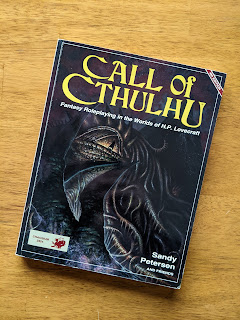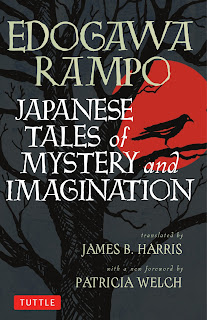Our last session of Savage Krevborna ended on a cliffhanger: Rebecca Reichman was revived from magical stasis by the genius of Viktoria Frankenstein. This was a great session that had a little of everything and a lot of classic Gothic conventions: a masquerade ball (loved their impromptu costume shopping!), social manipulation, site-based exploration, a Darks Souls-style boss fight, horrible realizations and dark plotting. Here's what went down.
The Characters
Raoul Carathis, occultist and necromancer
Countess Catarina Redmoore, prioress of an unsettlingly convent
Doctor Pendleton Torst, rogue anatomist
Events
Rebecca suddenly bolted upright on the doctor's operating table, her eyes fluttering open. She proclaimed, "The cracks in the firmament align and the red window begins to open wide like the hungry mouth of the cosmos. The Chained Scholar lurches forward, broken, but undaunted. He’s waited eternities for this conjunction.” She looked directly at Raoul. “I know where the third cosmic chart may be found.” She then collapsed back onto the operating table.
After resting a bit, Rebecca regained consciousness and was better able to explain her cryptic statement. She knew that the third cosmic chart, the last chart needed to complete the overlaying triptych of the two charts already in Raoul's possession, was somewhere in the basement of the Bellflower mansion. When she was stricken by the blast of the eldritch energy that tore through Creedhall decades ago, her mind was unmoored from her body; she was caught in-between the mortal world and an eldritch plane she referred to as "the Outer Dark." In that state she was able to observe things, but powerless to intervene. She had seen the group kill her husband, which she bore them no ill will for as he had been warped by eldritch powers and grief into a man she no longer knew, but she had also observed how an eldritch entity of great power was trying to enter the moral world.
Viktoria was able to fill in a bit of context. She theorized that Markus Bellflower had attempted an eldritch rite from within the Bellflower mansion that had resulted in the unleashing of magical energy that had put Rebecca into the accursed coma in the first place. She also added that Markus's son, Lord Aidan Bellflower, had followed in his father's footsteps by dabbling in the occult. In fact, Viktoria hypothesized that Aidan Bellflower might be preparing to undertake a ritual of his own, as he was known to throw a masquerade ball prior to attempting a magical rite--and he happened to be hosting a masquerade tomorrow night.
Sensing an opportunity to get their hands on the third cosmic chart and to stop an inadept fool from unleashing uncontrolled arcane energies as his father had, the group quickly decided that they needed to break into the Bellflower mansion under the cover of the masquerade party and steal the chart. But how to get an invite?
Raoul remember his meeting with the poseur occultist Erasmus Feist, who had tried to bilk him out of a substantial sum of money for a "cure" for Rebecca, and decided he was a likely mark. Raoul tracked Feist down to a cafe where he was holding court with his clueless acolytes. Then Catarina went to work. First she caught his eye, then she reeled him in with some flirtatious banter. He offered to pick her up in his carriage and take her as his companion for the evening at Lord Bellflower's ball. She even managed to finagle invitations for her "bodyguards," Raoul and Pendleton.
Invitations now secured, the group spent the rest of their day obtaining suitable outfits for the masquerade ball. Pendleton selected an outfit reminiscent of the one from "The Masque of the Red Death," though his was a medically accurate depiction of the plague. Raoul opted for a black suit and a starved-looking mask that made him look like the very avatar of famine. Catarina chose to represent war with a red ballgown and a ruby choker that recalled the image of a slit throat. Thus attired, the group was met by Erasmus Feist's carriage at the appointed time and whisked to the Bellflower mansion on the outskirts of Creedhall.
Once inside, the group quickly lost Feist in the press of guests. Catarina headed to the dance floor, looking to gather information on Aidan Bellflower. She was asked to dance by Baron Marius DuVry, who recognized her. She didn't know him personally, but knew his reputation: his family had successfully transition from landowners to mercantile investors, and his wife had disappeared under mysterious circumstances. As they danced, DuVry revealed another connection beside their shared upper-class origins: he flashed a pin depicting Scylla. DuVry inquired whether Catarina knew anything about the goddess growing distant of late, as well as expressing his concerns about a certain disruption of trade: "You see, I pay quite a bit of money each month to Belle Silvra to insure that the shipping business I have on the high seas is unmolested, but I keep hearing horrifying tales of some hideous scarred, red-headed terror that is disrupting everything." Catarina immediately recognized the "terror" as being Captain Laurant, but she kept quiet about that fact and filed it away as something to look into.
Pendleton decided to wander the crowd, hoping to find Lord Aidan or someone in his circle. He did not, but he was approached by a small, pale woman in a black dress and a raven-like feathered mask. She introduced herself as Serafina Pohlachek and complimented Pendleton on his costume, as well as the costumes of his companions. Serafina was strangely blunt and had a general lack of affect; she asked if Pendleton's costume wasn't just a costume and if he had an interest in "morbid" things. When he admitted he did, their conversation drifted to Serafina talking about her work as a "gravedigger" (which Pendleton realized was a euphemism) and she let slip that she supplied Lord Bellflower with "materials," particularly severed heads. Serafina abruptly ended the conversation, leaving Pendleton with some disturbing facts to think over.
Raoul spent his time looking for an entryway to the mansion's cellar, and determined that there were stairs in the kitchen adjoining the ballroom that would suit their purpose. He also cast a spell to detect magical emanations and saw that servants had been tracking arcane residue up from the basement as they brought up cases of wine. When Lord Bellflower finally appeared to welcome his guests, Raoul and Pendleton took the opportunity to sneak into the kitchen and down the stairs to the cellar. Catarina stayed behind to mingle and pick up additional information about what Aidan Bellflower was up to. Also, maybe she just wanted to get a few more dances in.
In the basement, Pendleton and Raoul picked their way through the wine cellar by lantern light until they found crude stone stairs leading down. Following the stairs, they found themselves in a more ancient sublevel that was once been a dormitory of some kind. Strangely, the carvings on the walls depicted the Vlaak being served by human beings--which should have been impossible as the Vlaak we thought to pre-date the rise of humanity! They picked another corridor to follow, but their progress was checked when writhing, tentacled shadows descended from the ceiling and began to speed toward them. The duo managed to fight off the creatures, killing the last one just as Catarina arrived to join them.
As they explored the Bellflower mansion's secret cellar they stumbled upon a chamber with an altar of black stone shot through with veins of green. Above the altar was a new tapestry depicting Aidan Bellflower as a godlike figure, clad in sumptuous robes with power pouring from his hands. This narcissistic portrait only made the group hate him more than they already did.
In a circular chamber they found a large fountain shaped like a mass of tentacles; the tentacles enwrapped a statue of a knightly figure armed with a warhammer. A tentacle was also wrapped around a bronze orb, which Raoul pried from its grasp. Unfortunately, this caused the tentacles to animate, which released the also animated knight--the knight stalked toward them with its hammer ready to strike. The ensuing battle was fairly brutal; Raoul was sent reeling. When the statue was badly damaged, it brought its hammer down on the stone floor of the chamber. The floor shattered and everyone fell into the chamber below. The fight continued. Raoul summoned a skeleton warrior to assist. Pendleton blinded the statue with an alchemical concoction, which gave Catarine the perfect opportunity to deal the killing blow.
In this sublevel, they discovered a chamber in which a strange being--pale, cracked skin leaking black fluid, only a swirl of shadowy colors where its face should be--was trapped within a summoning circle. When questioned, it named itself the Envoy of the Black Stars and stated that it had been conjured by Aidan Bellflower to provide guidance on the magical working he was engaged in, which it identified as the same rite that Aidan's father had done that ended so catastrophically a generation past. The Envoy stated that Aidan's working was doomed to fail as well, as he did not understand that all three charts were needed to successfully open or close the Red Window to the Outer Dark. When they ran out of questions for the Envoy, they broke the summoning circle and the creature simply disappeared.
The group also found a collection of brains in jars that were connected to a cannister of fluid and eldritch machinery. The jars were all labeled; the brains of six men and five women were present. The last jar was empty, but it was labeled "Rebecca." (The brains perhaps explained the heads that Serafina had previously delivered to Bellflower.) Feeling disgusted and protective of Rebecca, Raoul commanded his skeleton minion to destroy the jars, machinery, and brains.
The group also discovered the third chart of the cosmos they had been seeking. With their prize in hand, they ascended a set of stone stairs that brought them out into a shed in the garden of the Bellflower estate. However, instead of fleeing the property, they hatched a plan to deal with Aidan Bellflower permanently. Catarina found Bellflower and convinced him to take her boating in the morning before he would be busy readying himself for his ritual.
Meanwhile, Pendleton found Serafina smoking a cigarette in front of the mansion. She asked him if the name he gave her earlier was a ruse. He admitted it was. She asked him if he weren't really Pendleton Torst. He admitted he was. She then told him that she recognized him from the description the Holland family was circulating as they tried to discover his whereabouts. She also informed him that they had hired a group of assassins known as the Black Rats to take him out. He thanked her for the intel and she gave him her business card--which read "Serafina Pohlachek, The Angel of the Graves." Perhaps they'll cross paths again.
When morning came, Catarina met with Aidan Bellflower and accompanied him out on his boat. But not even the picnic lunch he packed softened her resolve. Catarina got Aidan quite drunk, then pushed him overboard and made sure he drowned. Problem solved.
When the group overlayed the three cosmic charts together, they showed an animated scene: a beam of energy fell from the heavens on a mountain peak in Sibersk. Their next destination was now clear.


_(cropped).jpg)
















.jpg)


.jpg)





